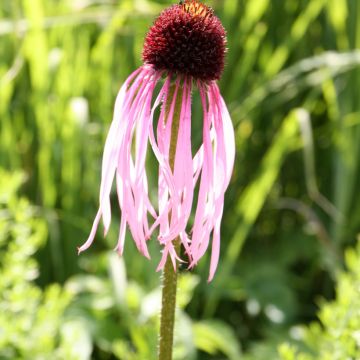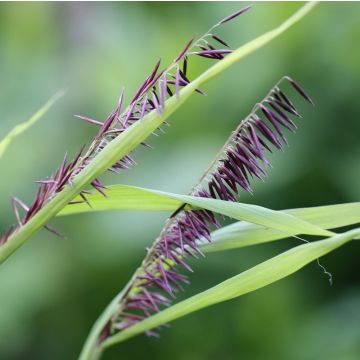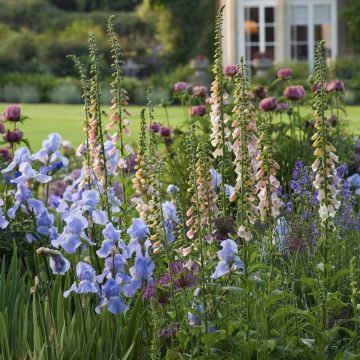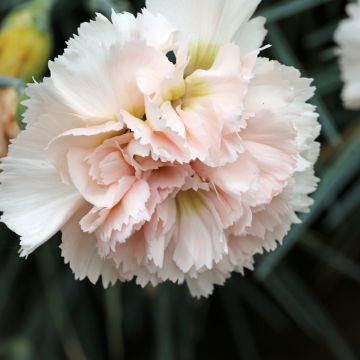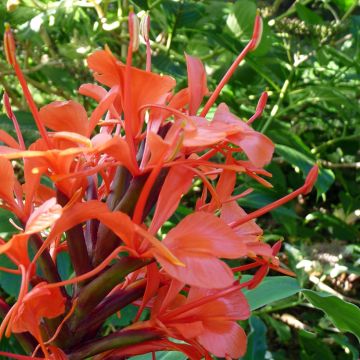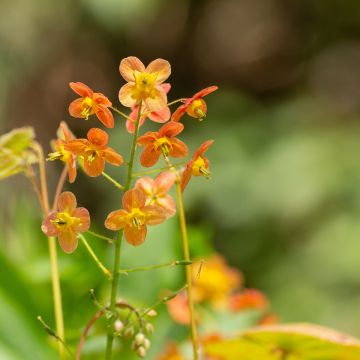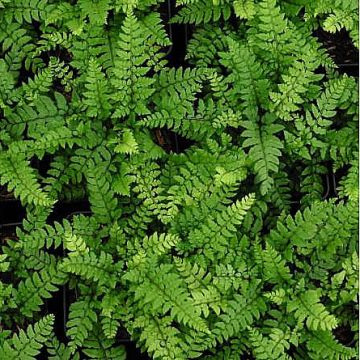

Pimpinella major Rosea
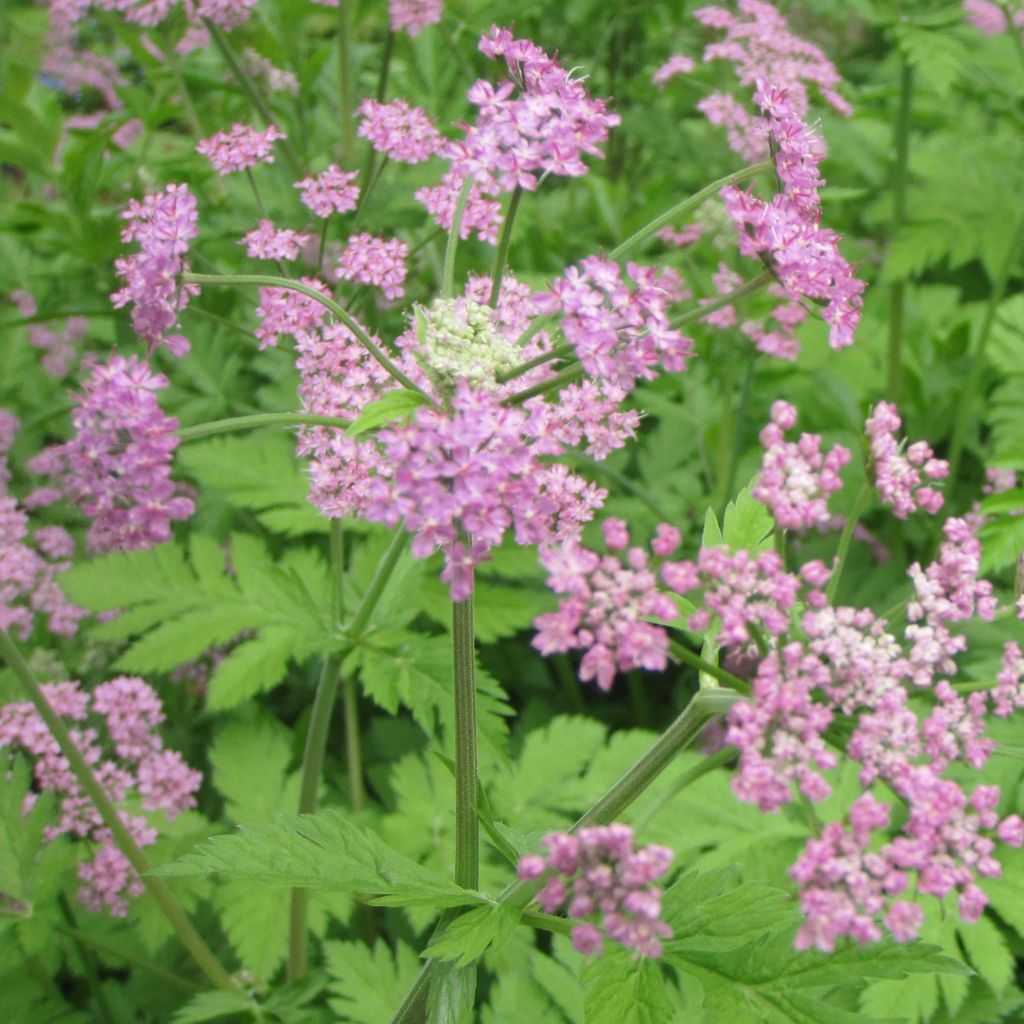

Pimpinella major Rosea


Pimpinella major Rosea
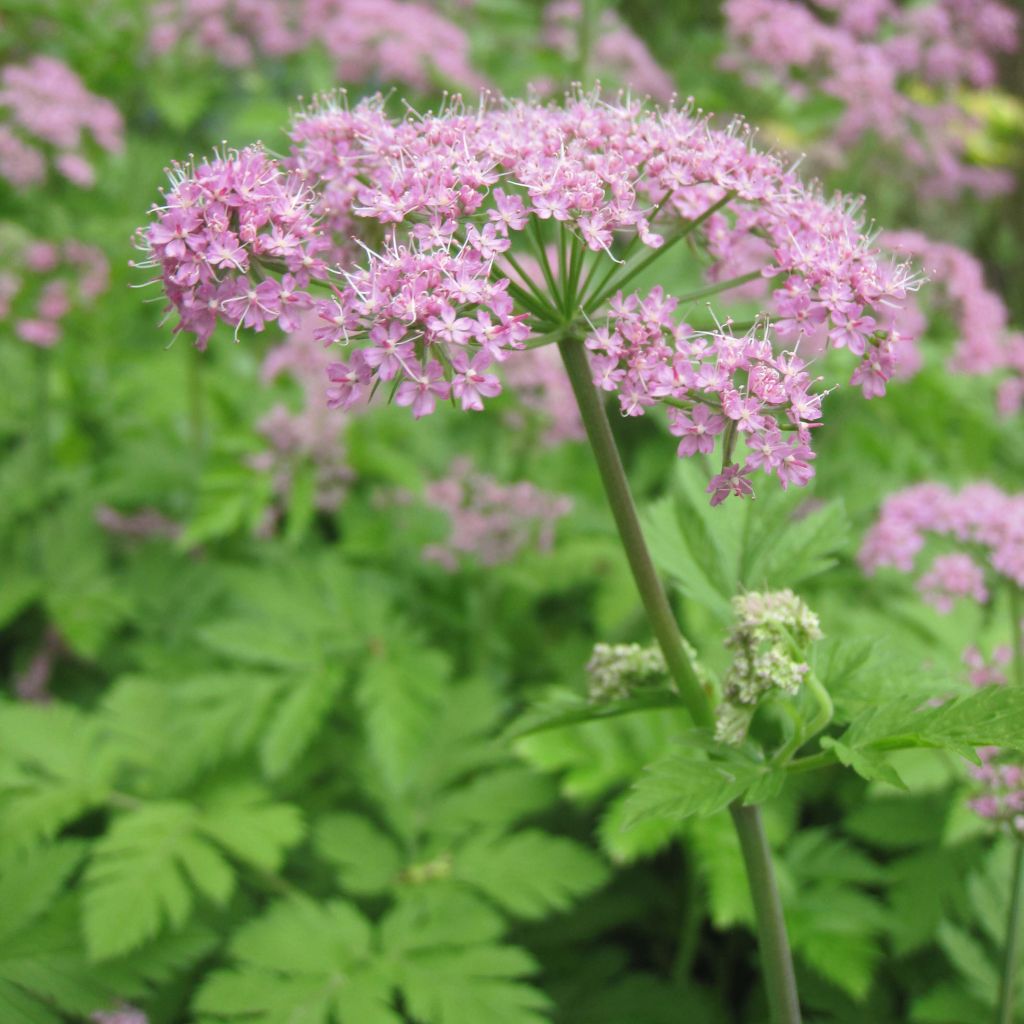

Pimpinella major Rosea


Pimpinella major Rosea
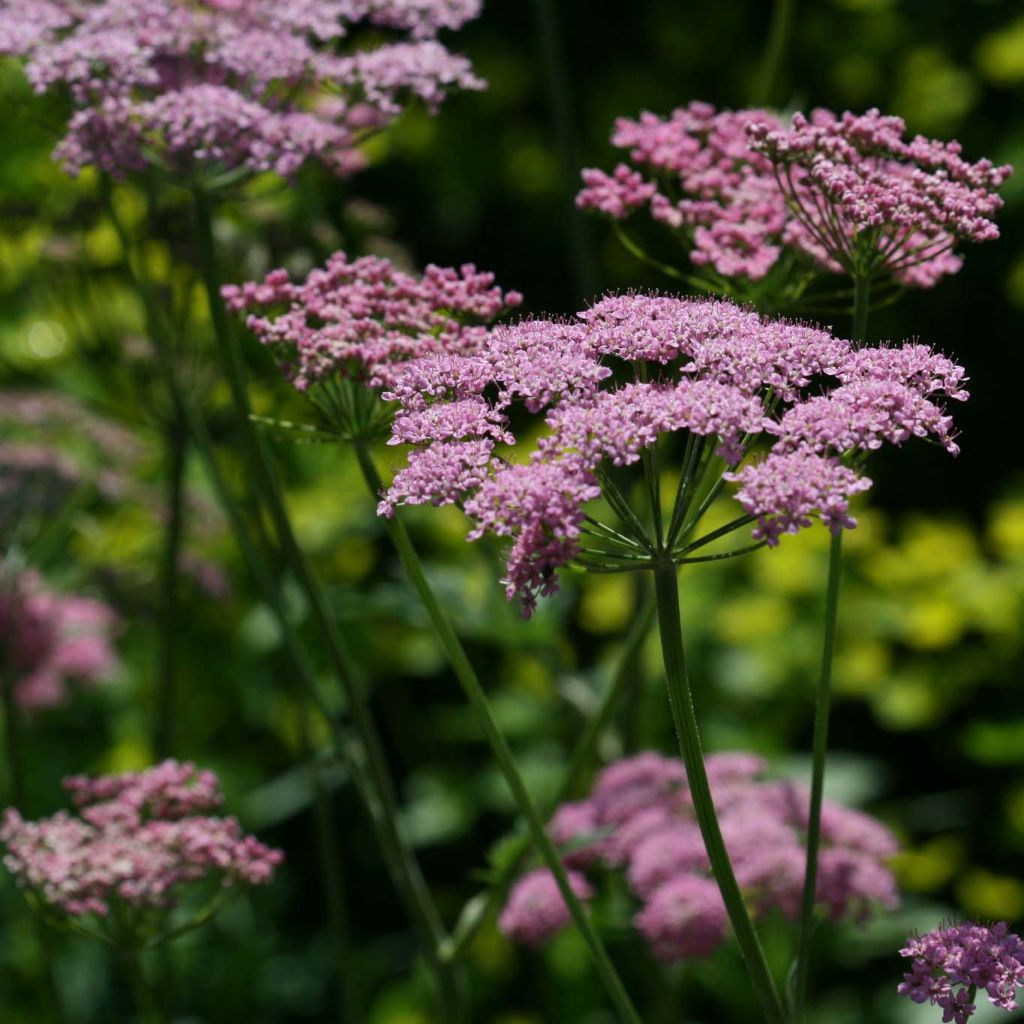

Pimpinella major Rosea
Pimpinella major Rosea
Pimpinella major Rosea
Pink Greater Burnet Saxifrage
Very fine and delicate flowering. A must-have in one's garden.
Florence, 27/03/2023
Special offer!
Receive a €20 voucher for any order over €90 (excluding delivery costs, credit notes, and plastic-free options)!
1- Add your favorite plants to your cart.
2- Once you have reached €90, confirm your order (you can even choose the delivery date!).
3- As soon as your order is shipped, you will receive an email containing your voucher code, valid for 3 months (90 days).
Your voucher is unique and can only be used once, for any order with a minimum value of €20, excluding delivery costs.
Can be combined with other current offers, non-divisible and non-refundable.
Home or relay delivery (depending on size and destination)
Schedule delivery date,
and select date in basket
This plant carries a 12 months recovery warranty
More information
We guarantee the quality of our plants for a full growing cycle, and will replace at our expense any plant that fails to recover under normal climatic and planting conditions.

Would this plant suit my garden?
Set up your Plantfit profile →
Description
Pimpinella major Rosea is a very pretty plant with pale pink cloudy flowering. It is related to anise and carrot. This perennial plant with fern-like foliage reveals itself in summer, adorned with delicate umbels of small star-shaped flowers in a tender pink colour. Perfect for gracefully adorning natural areas of the garden where it sometimes self-seeds, Pimpinella major Rose is one of those discreet but talented plants, essential for lightening up all other flowers. It is easy to grow in the sun, in moist but well-drained soil.
Pimpinella major is a plant from the Apiaceae family (formerly umbellifers), related to celery, carrot or astrantia. It is native to Western Europe and the Caucasus. It can be found up to 2000 meters (6562 feet) altitude in meadows, along ditches, in shrubs and at the edge of forests, usually on limestone soil. The 'Rosea' form, rarer than the type, is distinguished by its pale pink flowers and a slightly more modest stature.
It is a perennial herbaceous plant with rhizomatous roots that somewhat resembles a brown carrot. It forms a tuft 55 cm (22in) tall when flowering and on average 40-50 cm (16-20in) wide, depending on the growing conditions: a plant growing in dry soil will be shorter, while one benefiting from moist and fertile soil can reach 90 cm (35in) in height. It is composed of hollow stems branching from the base, furrowed and angular, adorned with leaves divided into oval and toothed leaflets. The leaves located at the base of the plant, carried by a petiole of 20 to 40 cm (8 to 16in) in length, are more deeply divided than those found on the upper part of the stems. Their colour is a slightly satiny dark green. Flowering takes place from May to July-August depending on the climate. Floral stems emerge from the foliage bearing at their tip a flat umbel of flowers, 5 to 6 cm (2in) wide, organized in 10 to 25 ray florets adorned with small star-shaped flowers in a smoky pink colour. The flowering, highly visited by pollinating insects, is followed by the formation of ovoid fruits, 2-3 mm (0in) long, brown, bordered by pronounced ribs. When conditions are favourable, in light and moist soil, the Pimpinella self-seeds spontaneously.
Pimpinella major Rosea, just like thistles, wild chicory, centaureas and poppies, brings the charm of the countryside into our gardens. Undemanding, non-invasive and of infinite lightness, this perennial with its carrot-like appearance and pink flowers has its rightful place in an English-style garden, on a slope, an informal border or a slightly wild area. It pairs well with other unassuming plants such as perennial geraniums and salvias, catmints, daisies, botanical daylilies, as well as shrub roses and herbaceous or shrubby peonies. Burnets, meadow rues, Alliums and perennial peas will also make good companions for it, in the garden as well as in bouquets.
.
Report an error about the product description
Pimpinella major Rosea in pictures
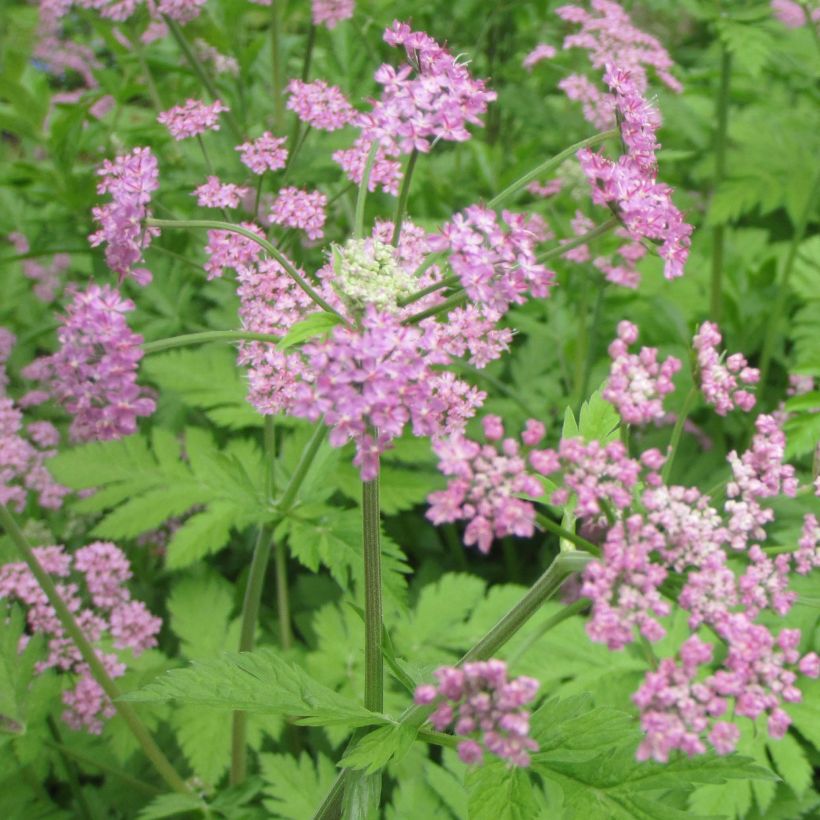

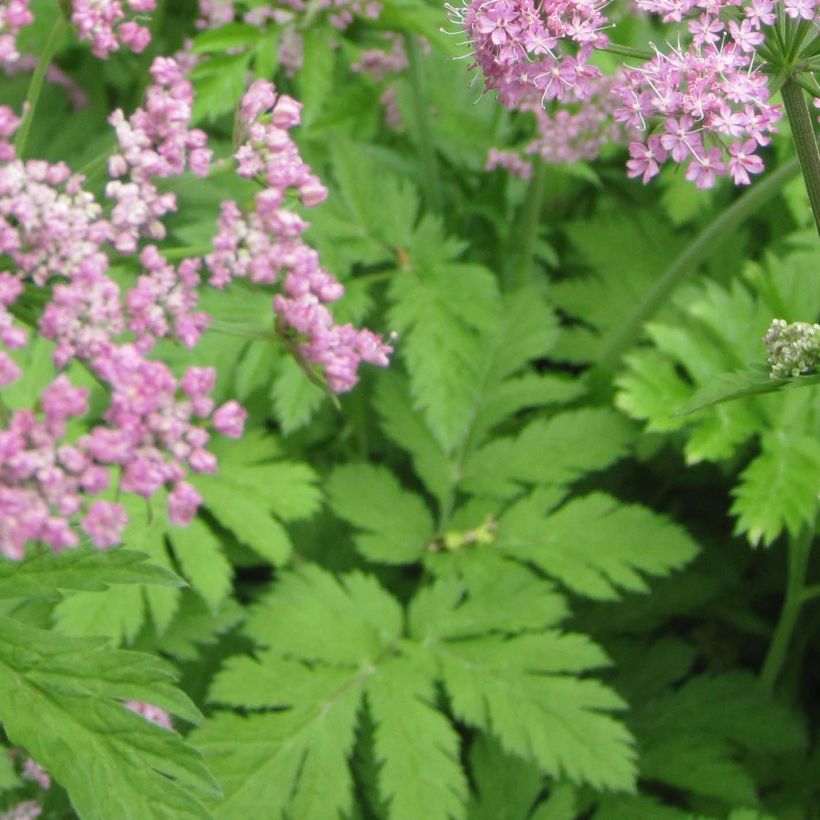

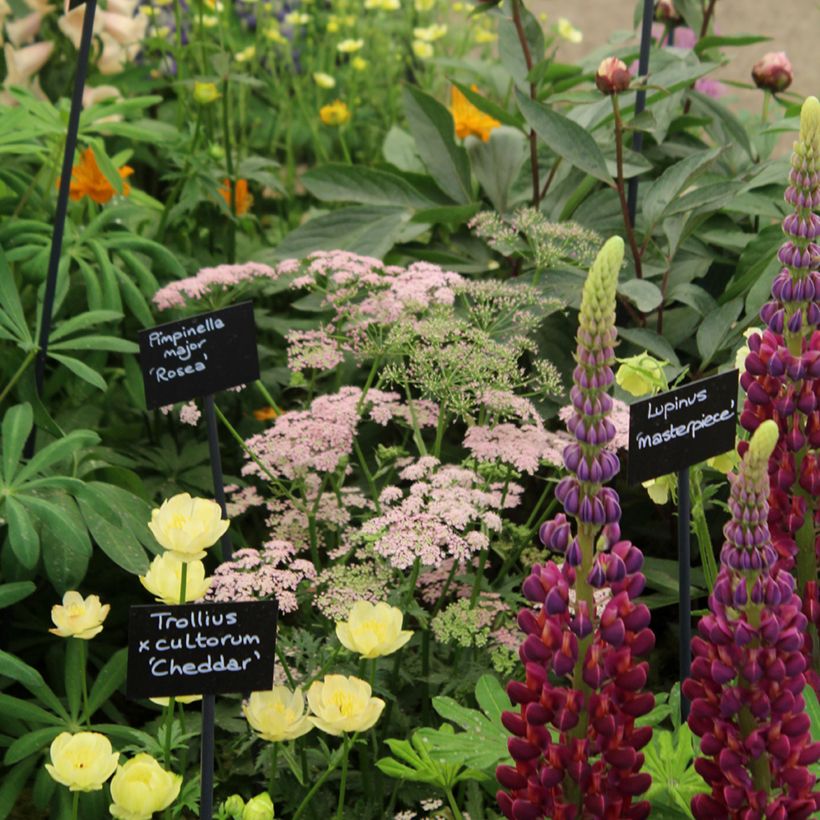

Flowering
Foliage
Plant habit
Botanical data
Pimpinella
major
Rosea
Apiaceae
Pink Greater Burnet Saxifrage
Western Europe
Other Perennials A to Z
View all →Planting and care
Plant Pimpinella major Rosea in ordinary, moist but well-drained soil, preferably with calcareous tendency, in a sunny or partially shaded position. It requires little maintenance. Cut back the unsightly foliage before winter and remove faded flowers to encourage a second flowering. It readily self-seeds in light and moist soil. Its only known enemies are slugs and snails.
Pimpinella major can be planted in spring or autumn, at a rate of 5 plants per square metre. To plant your young plant, work the soil to a depth of 20 cm (8in), crumbling the soil and adding a base amendment such as bonemeal at the bottom of the planting hole. Position your plant,out of its pot, covering the top of the root ball with 3 cm (1in) of soil, backfill, and water thoroughly to eliminate air pockets. In dry weather, regular watering is necessary for a few weeks to facilitate root development. In wet weather, slugs, which young plants fear, should be kept away. How? By using wood ash, anti-slug seeds, or by making traps with beer.
Planting period
Intended location
Care
Planting & care advice
-
, onOrder confirmed
Reply from on Promesse de fleurs
Similar products
Haven't found what you were looking for?
Hardiness is the lowest winter temperature a plant can endure without suffering serious damage or even dying. However, hardiness is affected by location (a sheltered area, such as a patio), protection (winter cover) and soil type (hardiness is improved by well-drained soil).

Photo Sharing Terms & Conditions
In order to encourage gardeners to interact and share their experiences, Promesse de fleurs offers various media enabling content to be uploaded onto its Site - in particular via the ‘Photo sharing’ module.
The User agrees to refrain from:
- Posting any content that is illegal, prejudicial, insulting, racist, inciteful to hatred, revisionist, contrary to public decency, that infringes on privacy or on the privacy rights of third parties, in particular the publicity rights of persons and goods, intellectual property rights, or the right to privacy.
- Submitting content on behalf of a third party;
- Impersonate the identity of a third party and/or publish any personal information about a third party;
In general, the User undertakes to refrain from any unethical behaviour.
All Content (in particular text, comments, files, images, photos, videos, creative works, etc.), which may be subject to property or intellectual property rights, image or other private rights, shall remain the property of the User, subject to the limited rights granted by the terms of the licence granted by Promesse de fleurs as stated below. Users are at liberty to publish or not to publish such Content on the Site, notably via the ‘Photo Sharing’ facility, and accept that this Content shall be made public and freely accessible, notably on the Internet.
Users further acknowledge, undertake to have ,and guarantee that they hold all necessary rights and permissions to publish such material on the Site, in particular with regard to the legislation in force pertaining to any privacy, property, intellectual property, image, or contractual rights, or rights of any other nature. By publishing such Content on the Site, Users acknowledge accepting full liability as publishers of the Content within the meaning of the law, and grant Promesse de fleurs, free of charge, an inclusive, worldwide licence for the said Content for the entire duration of its publication, including all reproduction, representation, up/downloading, displaying, performing, transmission, and storage rights.
Users also grant permission for their name to be linked to the Content and accept that this link may not always be made available.
By engaging in posting material, Users consent to their Content becoming automatically accessible on the Internet, in particular on other sites and/or blogs and/or web pages of the Promesse de fleurs site, including in particular social pages and the Promesse de fleurs catalogue.
Users may secure the removal of entrusted content free of charge by issuing a simple request via our contact form.
The flowering period indicated on our website applies to countries and regions located in USDA zone 8 (France, the United Kingdom, Ireland, the Netherlands, etc.)
It will vary according to where you live:
- In zones 9 to 10 (Italy, Spain, Greece, etc.), flowering will occur about 2 to 4 weeks earlier.
- In zones 6 to 7 (Germany, Poland, Slovenia, and lower mountainous regions), flowering will be delayed by 2 to 3 weeks.
- In zone 5 (Central Europe, Scandinavia), blooming will be delayed by 3 to 5 weeks.
In temperate climates, pruning of spring-flowering shrubs (forsythia, spireas, etc.) should be done just after flowering.
Pruning of summer-flowering shrubs (Indian Lilac, Perovskia, etc.) can be done in winter or spring.
In cold regions as well as with frost-sensitive plants, avoid pruning too early when severe frosts may still occur.
The planting period indicated on our website applies to countries and regions located in USDA zone 8 (France, United Kingdom, Ireland, Netherlands).
It will vary according to where you live:
- In Mediterranean zones (Marseille, Madrid, Milan, etc.), autumn and winter are the best planting periods.
- In continental zones (Strasbourg, Munich, Vienna, etc.), delay planting by 2 to 3 weeks in spring and bring it forward by 2 to 4 weeks in autumn.
- In mountainous regions (the Alps, Pyrenees, Carpathians, etc.), it is best to plant in late spring (May-June) or late summer (August-September).
The harvesting period indicated on our website applies to countries and regions in USDA zone 8 (France, England, Ireland, the Netherlands).
In colder areas (Scandinavia, Poland, Austria...) fruit and vegetable harvests are likely to be delayed by 3-4 weeks.
In warmer areas (Italy, Spain, Greece, etc.), harvesting will probably take place earlier, depending on weather conditions.
The sowing periods indicated on our website apply to countries and regions within USDA Zone 8 (France, UK, Ireland, Netherlands).
In colder areas (Scandinavia, Poland, Austria...), delay any outdoor sowing by 3-4 weeks, or sow under glass.
In warmer climes (Italy, Spain, Greece, etc.), bring outdoor sowing forward by a few weeks.































